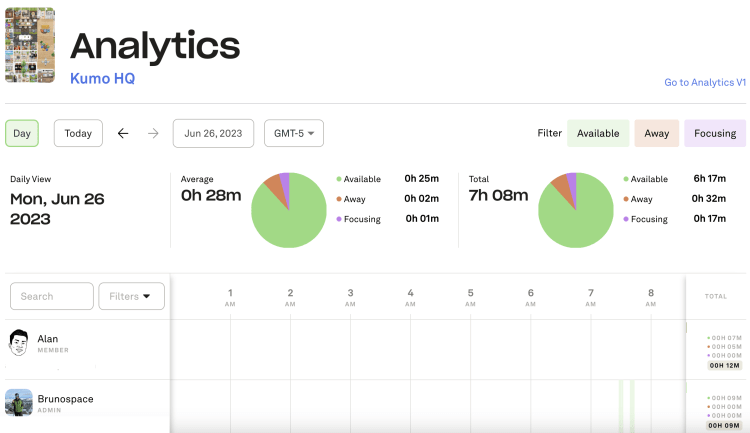Have you ever wondered about the secret sauce behind the success of high-performing Agile teams? It’s the Scrum Master! Their role is pivotal in steering the team toward success by guiding them through the Scrum process, ensuring effective collaboration, and overseeing the execution of tasks. A proficient Scrum Master is like a skilled conductor, orchestrating a harmonious symphony of Agile project management.
Yet, the Scrum Master’s role can often be misunderstood or underappreciated. Some see it as a secondary role or an optional extra, but those in the know understand that a Scrum Master’s contributions are integral to Agile project success. So let’s delve into the world of Scrum Masters, uncover the nuances of their role, and discover how they carve a niche for themselves in the Agile landscape.
Key takeaways
- A Scrum Master acts as both a Servant Leader and Process Facilitator, focusing on implementing and upholding Scrum principles within the team and leading Agile project management. The role requires a combination of technical skills and soft skills like communication, adaptability, and problem-solving.
- Scrum Master certifications, such as CSM, PSM, and DASM, offer validation of the holder’s knowledge and skills in Agile and Scrum methodologies, potentially enhancing their professional credibility and marketability.
- Tools like Kumospace are essential for Scrum Masters in managing virtual and hybrid teams effectively, providing features for collaboration, sprint management, and analytics to monitor team performance and make data-driven decisions.
The role of a Scrum Master

A Scrum Master operates as an Agile champion, ushering their team through the Scrum framework. This structured approach to Agile methodology proves particularly valuable in complex projects like software development. The Scrum Master’s role is two-fold: they are both a Servant Leader and a Process Facilitator, ensuring that the team successfully navigates the Scrum process and achieves their goals.
Scrum masters act as heralds of Scrum principles, lighting the way for their team members. They ensure that the Scrum methodology is understood and implemented correctly, facilitating daily stand-ups, sprint planning, and other Scrum events. In addition, their role in Agile project management is on an upward trajectory, with substantial growth in job openings reported by LinkedIn.
Despite being a highly rewarding career path, the Scrum Master’s job description is far from easy. They need to navigate the challenges of team dynamics, manage the Scrum process, and also tackle the often daunting task of fostering an environment of transparency, adaptation, and inspection. Yet, the satisfaction of guiding a Scrum team to success makes it all worthwhile.
Servant Leader
In the role of Servant Leaders, Scrum Masters function as the team’s lifeblood. They put the needs of the team first, facilitating their growth and development, and ensuring adherence to Agile principles during Scrum events. They lead by example, demonstrating Agile principles in action and fostering a culture of transparency and collaboration.
Their influence transcends management to encompass coaching, enabling their team to self-organize and collaborate efficiently, ensuring successful project completion. With their deep understanding of Scrum methodology, they lead their teams on the path of Agile, fostering efficient collaboration and task completion using the Agile project management methodology. By doing so, they contribute to their organization by providing leadership and training on the Scrum methodology, extending their servant leadership beyond the immediate team.
Process facilitator
As process facilitators, Scrum Masters perform an essential function. They:
- Ensure that the team adheres to Agile principles and practices
- Educate the team on these processes
- Act as stewards of the Scrum process
- Promote core values such as transparency and collaboration
During problem-solving workshops, Scrum Masters lead the team in pinpointing root causes of issues, brainstorming solutions, and formulating actionable plans within the Agile framework. They lead by example, demonstrating how to tackle challenges head-on and adapt swiftly to changes. This role extends to ensuring that the team adheres to agreed-upon processes, educating the team on Agile practices, and promoting a work environment that embodies Agile values.
Essential skills for Scrum Masters

The role of a Scrum Master calls for a combination of skills, including:
- Technically savvy
- Interpersonal skills
- A mindset geared towards perpetual learning
- Proficiency in Agile methodologies
- Strong communication and collaboration skills
- Adaptability and problem-solving abilities
These skills are the bedrock on which effective Scrum Masters build their expertise.
A Scrum Master job description includes active listening, transparency, effective facilitation, conflict resolution, and a comprehensive understanding of Scrum and Agile principles. Their Agile expertise enables them to facilitate collaboration and inspire the team, and their ability to adapt and solve problems is crucial for addressing challenges and facilitating ongoing improvement within their teams.
Armed with these skills, Scrum Masters are poised to traverse the ever-changing terrain of Agile project management, successfully implementing Scrum practices and steering their teams towards success. They are the torchbearers of Agile principles within their teams, illuminating the path to success with their expertise and dedication.
Communication and collaboration
Proficient communication and collaboration constitute the cornerstone of a Scrum Master’s toolkit. They promote:
- Open and transparent communication
- Guiding the team through the Scrum process
- Providing coaching
- Eliminating impediments
They are the glue that holds the team together, fostering a culture of open dialogue and respect.
Addressing communication challenges is a critical part of a Scrum Master’s role. They ensure the use of time-boxing, promote the significance of the Scrum Master’s role to stakeholders and senior management, and offer training and educational opportunities for both team members and stakeholders to enhance communication and cooperation. In essence, they are the bridge that connects the team, facilitating effective collaboration and team synergy.
Agile expertise
Scrum Masters function as the guardians of Agile expertise. Their role includes:
- Having a profound comprehension of Agile methodologies and Scrum practices
- Leading the team through the Scrum process
- Ensuring the team’s efficient performance
- Ensuring the successful completion of projects
A Scrum Master with a deep understanding of Agile principles can effectively:
- Implement and customize Agile principles within their teams
- Ensure team efficiency and product enhancement
- Utilize Agile Scrum methodology as the primary Agile project management framework
- Act as the navigator in the Agile journey, steering their teams towards success.
Problem-solving and adaptability
Scrum Masters rely heavily on their adaptability and problem-solving abilities as key competencies. They guide the team in applying Agile principles, enabling them to swiftly adapt to changes and derive lessons from difficulties. They are the catalysts for change, spurring their teams to adapt and evolve.
They enhance their problem-solving skills by consistently addressing and improving upon challenges and by evaluating the synchronization between the Scrum Team’s tasks and their objectives. They improve their adaptability skills by actively engaging in adaptations, demonstrating a willingness to modify plans and approaches as situations change, honing problem-solving abilities, and fostering soft skills such as open-mindedness and adaptability.
Scrum Master certifications

Scrum Master certifications like CSM, PSM, and DASM serve as proof of a candidate’s understanding and proficiency in Scrum and Agile methodologies. They are often seen as a stamp of credibility and can significantly boost a professional’s marketability. While certification is not mandatory for all Scrum Master positions, it can offer valuable foundational knowledge, encompassing the language and methodologies of Agile Scrum.
Moreover, certifications like the SAFe Scrum Master (SSM) emphasize implementing Agile and Scrum at scale, underscoring the importance of leadership within the Scrum practice. They equip Scrum Masters with the tools and techniques required to lead their teams effectively and inspire them to deliver their best.
We’ll now explore some of these certifications in more detail, focusing on their potential benefits for budding Scrum Masters.
Certified Scrum Master (CSM)
The Certified Scrum Master (CSM) certification, provided by the Scrum Alliance, is a highly esteemed credential for Scrum Masters. It provides a comprehensive understanding of Scrum and Agile, encompassing the four values and twelve principles as specified in the CSM Content Outline Learning Objectives document.
The certification process encompasses understanding the Scrum framework, team roles, events, and artifacts that are integrated into Agile development. The course provides a comprehensive understanding of Scrum and Agile, making it a valuable asset for every aspiring Scrum Master.
Professional Scrum Master (PSM)
The Professional Scrum Master (PSM) certification, offered by Scrum.org, offers a comprehensive understanding of Scrum principles and practices. The certification exam consists of a 60-minute time limit, with 80 multiple choice, multiple answer, and true/false questions, requiring a passing score of 85%.
The requirements for obtaining the PSM certification include having a minimum of four years of substantial experience as a Scrum Master in software development and completing recommended courses such as Applying Professional Scrum and/or Professional Scrum Master. This certification is a testament to a Scrum Master’s proficiency in Agile methodologies and Scrum practices.
Disciplined Agile Scrum Master (DASM)
For those who envision themselves leading Agile teams and implementing project management methodologies on a larger scale, the Disciplined Agile Scrum Master (DASM) certification offered by PMI is the perfect choice. The curriculum of the DASM certification encompasses the fundamentals of Agile and lean approaches such as Scrum, Kanban, SAFe, and more, diving deep into the implementation of the Disciplined Agile toolkit.
The DASM certification exam consists of 50 multiple-choice questions, administered online by Pearson VUE. This certification equips Scrum Masters with the knowledge and skills to effectively implement Agile methodologies at scale, making it a valuable addition to their professional portfolio.
Comparing Scrum Master roles

While the roles of Scrum Masters, Project Managers, and Product Owners frequently overlap, each boasts a unique focus and set of responsibilities. The Scrum Master is dedicated to upholding Scrum principles and overseeing the boundaries set by Scrum to enhance self-organization, unlike a Project Manager who oversees work packages, resources, and materials. On the other hand, the Product Owner focuses on determining the ‘why’ and ‘what’ of the product, influencing its direction and addressing customer needs.
This comparison of roles underscores the unique value that Scrum Masters bring to Agile Project Management. They are neither Project Managers nor Product Owners, but their role is just as crucial. They maintain the balance in the Scrum team, ensuring effective collaboration, and guiding the team through the Scrum process.
We’ll now investigate these comparisons more thoroughly to comprehend the distinct role of the Scrum Master.
Scrum Master vs. Project Manager
Project Managers are accountable for the comprehensive management of the project, overseeing areas such as:
- risk
- budget
- planning
- outcomes
Conversely, Scrum Masters serve as facilitators within an Agile team framework, ensuring adherence to Scrum practices and principles. They are not concerned with overseeing project timelines and deliverables like Project Managers.
Instead, they guide and lead Agile teams to work efficiently within the timeboxes provided by Scrum. They also play a crucial role in managing team dynamics, promoting collaboration, and establishing a safe environment.
Scrum Master vs. Product Owner
Scrum Masters and Product Owners have distinct roles, but they work together in a complementary way. While the Scrum Master focuses on process management, the Product Owner is responsible for product direction and addressing customer needs.
The Scrum Master plays a crucial role in leading and supporting the Agile development team to ensure effective adherence to Agile principles and practices within the Scrum process, fulfilling their Scrum Master responsibilities. In doing so, they embody the Scrum Master role, guiding the team towards success.
The Product Owner, on the other hand, is responsible for:
- Breaking down the product vision into manageable backlog items
- Ensuring their readiness for development
- Effectively communicating project or product requirements to the development team.
Enhancing Scrum Mastery with Kumospace

In today’s increasingly digitalized world, virtual collaboration tools, such as Kumospace, have become indispensable assets for Scrum Masters. Kumospace provides a virtual workspace for remote and hybrid teams, facilitating collaboration and strengthening relationships. Its interactive virtual spaces enable Scrum Masters to oversee project progress, conduct daily stand-ups, and address challenges in real-time.
With features like team chat, screen sharing, and online whiteboard, Kumospace aids Scrum Masters in facilitating effective communication and collaboration with their teams. It supports day-to-day Scrum activities through its features for small team collaboration, management of user stories and requirements from the backlog, conducting daily stand-up meetings, sprint planning, retrospectives, and visualizing work on a Kanban board.
Whether it’s managing a remote team, fostering a culture of collaboration, or gaining insights into team performance through advanced analytics, Kumospace has got Scrum Masters covered.
Virtual collaboration
Kumospace’s interactive virtual spaces offer an ideal setting for a Scrum Master to oversee project progress, conduct daily stand-ups, and address challenges in real-time. Its features such as screen sharing, spatial audio, and whiteboards empower Scrum teams to synchronize their efforts and address challenges efficiently in real-time.
This virtual platform is designed for hosting team meetings and brainstorming sessions within customizable spaces, fostering a collaborative atmosphere that is integral to the success of Agile teams.
Advanced analytics

Kumospace’s advanced people analytics provide visibility into how your team is spending their time, enabling Scrum Masters to:
- Monitor team performance
- Make data-driven decisions
- Recognize trends
- Identify obstacles
- Pinpoint areas for enhancement
This data can assist Scrum Masters in effectively managing their teams.
It also plays a crucial role in enabling companies to analyze intricate data sets and behavior, providing valuable insights for data-driven decision-making within the Scrum process.
Tips for aspiring Scrum Masters

For those inspired to pursue the journey of becoming a Scrum Master, it’s vital to concentrate on acquiring education, gaining practical experience, and committing to lifelong learning. Aspiring Scrum Masters should ideally have:
- A foundational education in fields related to business or technology, such as information technology, business administration, or computer science
- Hands-on experience in Agile methodologies
- Effective communication skills
- The ability to foster a culture of feedback
- Crucial skills such as active listening, accountability, risk management, and technical proficiency in processes
These qualities are vital for success as a Scrum Master.
Yet, the journey to becoming a Scrum Master extends beyond just education and experience. Considering the dynamic nature of the Agile landscape, with regular emergence of new methodologies, tools, and trends, it’s important to stay updated. Therefore, continuous learning and professional development are crucial for Scrum Masters to stay up-to-date with industry trends and best practices.
Education and experience
A strong educational background in business or technology, combined with practical experience in Agile methodologies, is essential for aspiring Scrum Masters. Employers typically favor candidates with a bachelor’s degree in IT, business administration, or a related field for the Scrum Master position. It’s also beneficial to acquire hands-on experience through courses, certifications, learning from experienced Scrum professionals, and seeking mentorship for guidance.
This blend of education and experience lays a strong foundation for a successful Scrum Master career.
Continuous learning
Continuous learning and professional development are crucial for Scrum Masters to stay up-to-date with industry trends and best practices. They can keep themselves informed about industry trends and best practices by:
- Engaging in Agile workshops and conferences
- Taking part in events to gain insights from experts
- Staying current with industry magazines and publications.
This continuous learning journey empowers Scrum Masters to elevate their decision-making processes and enhance overall project success.
Summary
In conclusion, the role of a Scrum Master is pivotal in Agile project management. Their unique focus on team success, process facilitation, and Agile expertise sets them apart from roles like Project Managers and Product owners. Their ability to facilitate effective communication and collaboration, their proficiency in Agile methodologies, and their adaptability and problem-solving skills are essential for the role.
Whether you’re an aspiring Scrum Master or a seasoned professional, continuous learning and adaptability are your best allies in this ever-evolving Agile landscape. And with tools like Kumospace, you can take your Scrum Mastery to the next level, fostering virtual collaboration and gaining insights through advanced analytics. So, are you ready to take the plunge and make a splash in the Agile world?
Frequently asked questions
The Scrum Master plays a crucial role in helping the Scrum team work more effectively by removing obstacles and facilitating communication with external groups. They are responsible for ensuring the Scrum framework is followed and may take on the role of a facilitator, coach, or Project Manager.
The average salary for a Scrum Master in the US is $108,026. With 7+ years of experience, the average salary is $111,414.
Yes, a Scrum Master is an IT professional who facilitates information exchange in an Agile environment. They are not the leader of the team but help manage information exchange.
The primary role of a Scrum Master is to facilitate the Scrum process and provide support to the team. This includes removing any obstacles that may hinder the team's progress.
The essential skills for a Scrum Master include effective communication, collaboration, proficiency in Agile methodologies, and problem-solving abilities. These skills are crucial for the successful facilitation of Scrum processes.





